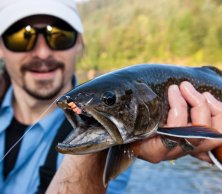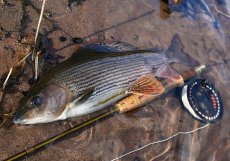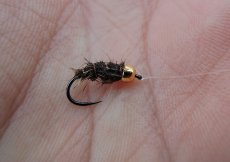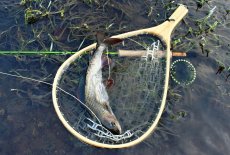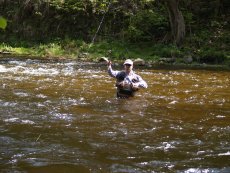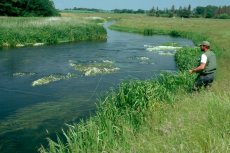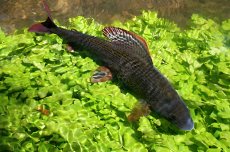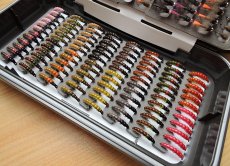If you want to be as successful as possible in fly fishing for river grayling, you should know all the appropriate tactics and techniques for catching this very often unpredictable, food-picking and moody fish! After reading the following lines, you will no longer be surprised by any situation when fly fishing for these majestic "flag bearers" = Thymallus Thymallus!
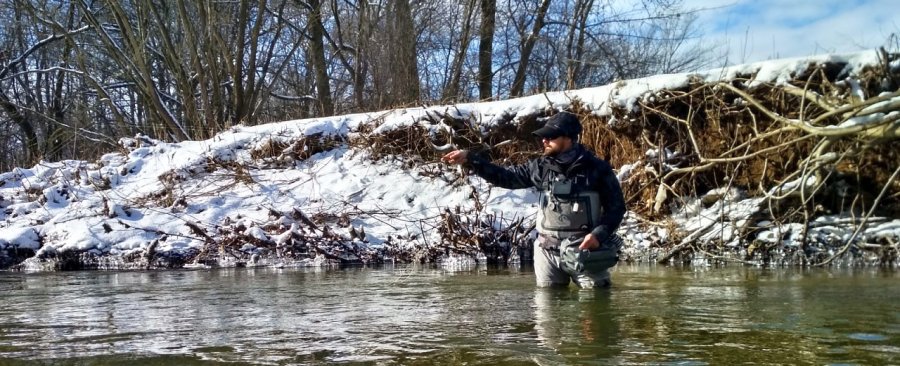
When fly fishing for grayling, the most important fishing tactic is to be as inconspicuous, quiet and agile as possible - to harmonize with nature. So if you are used to behaving like bull in a china shop in the river, because the fish you catch on your favorite river allegedly does not matter, then when fishing for grayling - especially in the autumn months - you need to radically change your opinion on fishing! In addition, it is quite clear that with the current approach, you will catch fewer fish everywhere than you actually could! 😏
As with any fish caught, it's great to map the planned catching part of river first - especially if it's new to you and you don't know the river you want to catch grayling. Believe that when you plan your own fishing, you read the flow a little in advance, your final hunt will be much smoother and more successful. So if you are going upstream (dry fly, nymph), it is ideal to go to the beginning of your hunt, for example, a few kilometers downstream, see the places that await you in a moment and think about where and what technique you will fish.
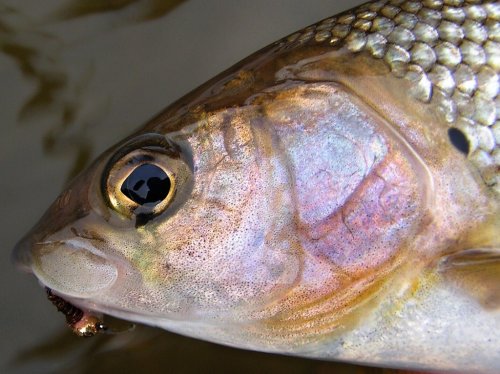
If you do the opposite, you will find that your hunt will be much less successful and you will be a little worried overall - you will often discover a promising place when you are standing in it and all the fish are gone. In addition, after the end of such a fishing day, you will have to return a long way to the car, which is the worst thing that can be after an unsuccessful fishing. Surely it is clear to you that the first option is definitely more meaningful overall! In the case of wet fly fishing downstream, the tactics of planning and reading the river are of course the same, only to the place from which you want to start fishing you will not go downstream, but against! 😉
So as soon as you arrive at the place where you want to start your successful fishing day, it is necessary to choose the main fishing technique, or think about the one you want to interleave the priority fishing technique! Based on this, before preparing your own hunt, prepare everything you need for the chosen fishing methods - leaders for nymph and wet fly fishing, as well as a tapered leader for delicate fishing with a small dry fly and everything connected with it (suitable floatant, amadou fly dryer, leader degreaser etc.)
If you have everything you need by your hand, you can start the hunt itself! But do you know all the important aspects of the main fishing techniques so that you can use them correctly at the moment and be as effective as possible when fly fishing for river grayling?
I have arranged the individual techniques of targeted fishing for river grayling according to their (nowadays) most frequent use - of course due to their effectiveness - and popularity by modern fly fishers themselves.
NYMPH FISHING: As mentioned in the related article "Fly Fishing For Grayling - TOP Grayling Flies", grayling is a fish of river bottom, and therefore is most effectively caught on various species of nymphs. When fishing grayling on a nymph, you can of course use all traditional (short and long nymph upstream and downstream using a fly line) and modern methods (European competitive nymphing techniques). However, when fishing for grayling, the most effective method is the French nymph, which is very sensitive thanks to the thin French leader, which is a great benefit when fly fishing for careful grayling. If you want to eliminate the percentage of missed strikes, use the strike indicators!
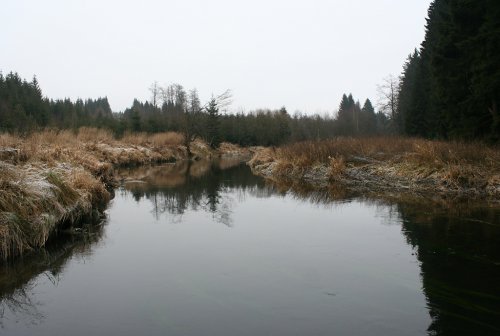
When fishing on a nymph, try to combine Tungsten Jigs and Tungsten Nymphs together with Czech Nymphs, which are very popular for grayling and, for example, where modern tungsten patterns no longer work, Czech Nymphs can suddenly bring life back to the river! Depending on the amount and color of the water, then choose their size and color - high and colored water = calmly larger and more colorful patterns, low and clear water = smaller and less conspicuous flies.
Nowadays, a very frequently used technique is a method called "Dry Fly - Dropper", in which it is caught on small tungsten nymphs, which are held just above the bottom or in a column by a very well-floating dry fly, which also acts as a perfectly visible indicator of engagement. If the dry fly dives, lift the rod, as this is most likely a strike of a fish!
DRY FLY FISHING: Fishing for grayling on a small dry flies tied at the end of a very fine leader is probably the most traditional and at the same time the most beautiful fly fishing technique! The moment the sun's rays break through the autumn mist, the temperature rises a little and the grayling begin to feed the hatching little mayflies from the surface is the most beautiful moment for which you should be prepared by a thin tapered leader, which will be comfortably and elegantly laid on the surface together with a faithful imitation of the just hatching insect - great meal for active grayling! At such a moment, I recommend you degrease the leader, choose a suitable fly, grease it with a quality floatant, give a couple of practice casts, during which you will try the correct presentation and you can start fishing for rising grayling against water and from a safe distance from which you do not scatter grayling!
Always remember that the grayling behind the dry fly slowly rises through the entire water column - it lets itself be carried away by the river current to the place where it takes the selected bite! Therefore, always throw even 0.5 - 1 m higher than where you see the grayling surface activity - of course, depending on the intensity of feeding! As soon as you cast exactly into the grayling "rings", for the reason described above, it can happen that you always cast your fly under a real grayling habitat!
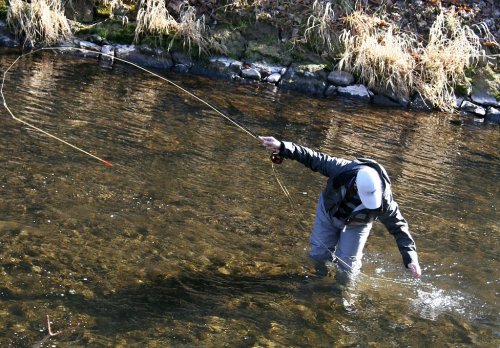
WET FLY FISHING: If you fail to catch nymphs and dry flies, it's time for a traditional method of catching salmonid fish, wet fly fishing, which is now somewhat neglected, yet very natural and still effective! If you offered your fly to graylings upstream when fishing for nymphs and dry flies, now you will have to change your technique a bit and catch more downstream in places where you expect a fish habitat!
A wet fly is often a great solution to a situation where you see the activity of grayling, but at the same time completely ignore all your precisely offered dry flies - they probably feeding on a pupae or drowned insects just below the surface, which is much better imitated by wet flies. Alternatively, you know about the occurrence of grayling in a given part of the river, but for some reason they do not react to the offered nymphs - they are eg "caught" and with this type of flies have only a negative experience (on very visited waters) - in this case, naturally drifting wet flies can be a solution of this situation.
Let's be honest - many modern fly fishermen don't normally catch a wet fly today, as they did in previous years - even before the "nymph boom"! Returning to traditional fly fishing techniques is definitely not a bad thing, especially if they help you to a beautiful and successful fishing day!
⭐ If you combine the knowledge gathered from this article with information from related publications from my FLY FISHING SPECIAL dedicated to fly fishing for river grayling, it is almost impossible for you to burn out completely when you encounter these elegant salmonid fish! 😉
➡ FLY FISHING FOR GRAYLING - TOP GRAYLING FLIES
➡ FLY FISHING FOR GRAYLING - TACKLE & EQUIPMENT FOR GRAYLING FISHING







